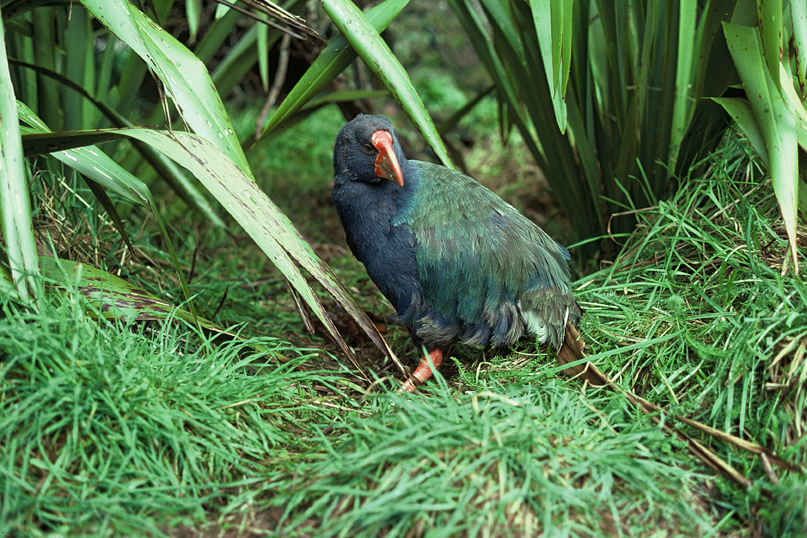The Takahe: Not a Dodo
Guest blogger – Campaign Manager for the Takahe, Joanna Cox
To see a takahe in the wild is to glimpse into an ancient world. I was privileged to see a pair on Kapiti Island a few years ago and was entranced by their slow, quiet and almost regal movements, startlingly beautiful blue-green plumage and contrasting scarlet beaks. They certainly have the characteristics of an extinct species only ever to be seen in a museum – slow breeding, non-flying, beautifully coloured and highly edible. Yet the takahe has defied extinction.

Takahe, Photo: JL Kendrick
With sightings rare and far between, the takahe was presumed extinct by 1930. Whilst one unfortunate takahe stood stuffed and lifeless, relegated to the British Museum to reside near the remains of the Dodo, 400 of its kind were quietly holding the fort in the valleys of the Murchison Mountains waiting to be rediscovered in 1948.
The takahe is an old school New Zealander, our connection to a time when birds ruled these lands. Descended from an Australian pukeko-like ancestor, the takahe flourished into their large, flightless and peaceful selves over many millions of years, in an Aotearoa free from humans and other predators.
In researching this blog I was surprised to find that a takahe can apparently run as fast as a race horse and in captivity, some have lived to over 20 years old. Takahe are environmentalists, eating their preferred food (protein and mineral rich tussock) by pulling the tussock tillers out from the base, actually helping the plant to regenerate. Once found all over New Zealand, today there are around 200 takahe, some still in the Murchison Mountains of Fiordland and others relocated to four offshore islands; Maud, Mana, Kapiti and Tiritiri Matangi. It is worth the trip to behold their haunting beauty.
Seeming too reserved for their striking appearance, the takahe are the shy wallflowers mortified to find they are the only hens at the party in fancy dress. The takahe won’t demand your attention or shout for your vote but don’t overlook this lost and found New Zealand treasure.
The book I most enjoyed reading to find out more about the takahe has lived on my bookshelf since the late 80s, Wild South: Saving New Zealand’s Endangered Birds by Rod Morris and Hal Smith.
